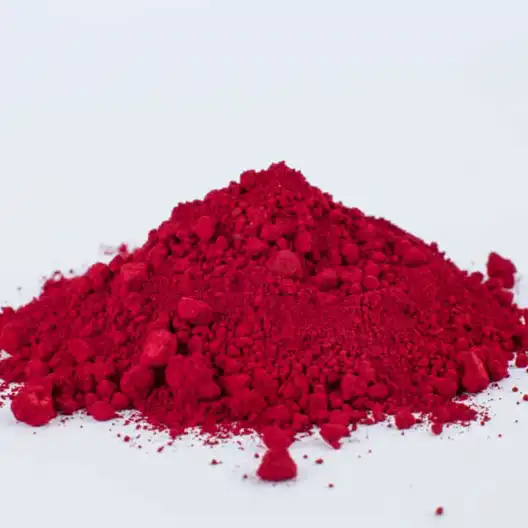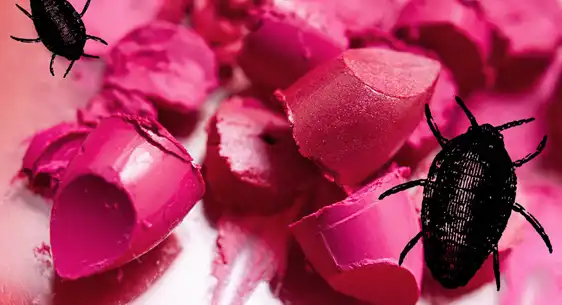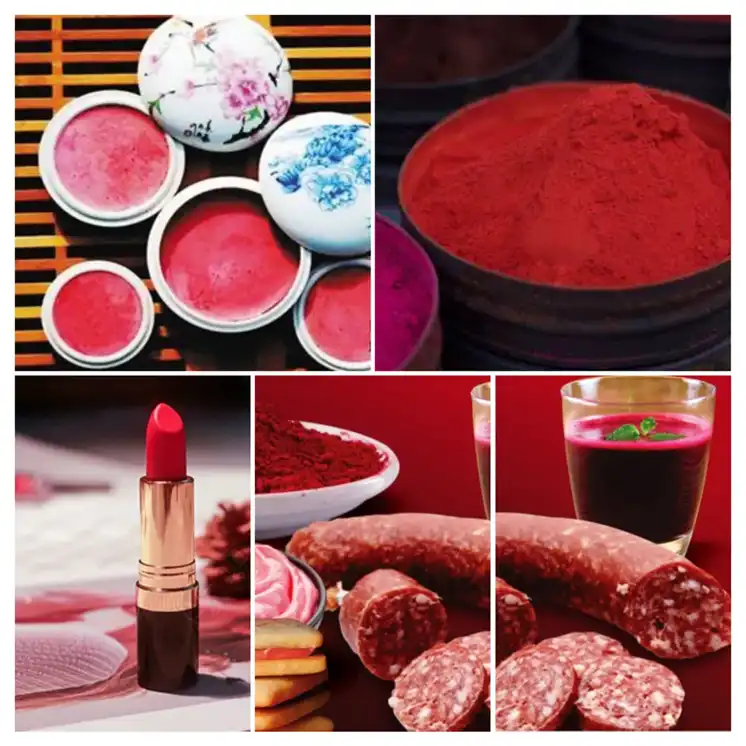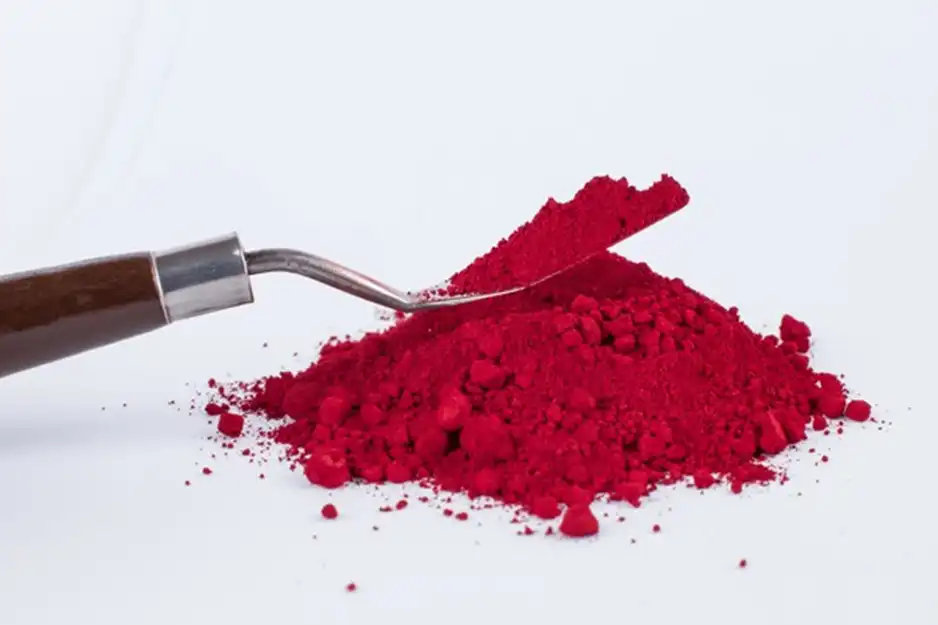What is Carmine Powder? A Complete Guide to the Natural Red Pigment
What is Carmine Powder?
Carmine powder is a natural dye extracted from the cochineal insect, Dactylopius coccus, known for its vibrant red color. This unique red pigment, also called carminic acid, has been used for centuries across various cultures. Originating in ancient civilizations, carmine has stood the test of time as a safe, effective, and beautiful natural dye. Today, it’s widely utilized in industries ranging from cosmetics to food production, where its intense hue is valued.
How is Carmine Powder Made?
The process of creating carmine powder is both intricate and fascinating. The dye is obtained by harvesting cochineal insects, which are predominantly cultivated in Central and South America. These insects feed on cactus plants, and after being dried, they’re ground to release the red pigment. The pigment is then purified and stabilized, resulting in a fine, vibrant powder that can be used to color products naturally.
How is Carmine Powder Made?
The process of making carmine powder begins with cochineal insects, which are primarily found on cactus plants. These tiny insects produce carminic acid as a defense mechanism, which is the key to the red pigment. Here’s an overview of the production process:
1. Harvesting the Cochineal Insects – The insects are carefully collected from cactus plants, typically by hand.
2. Drying – Once harvested, the cochineal insects are dried, usually through sun exposure or in ovens. This drying process is crucial to ensure the preservation of the pigment.
3. Extraction of Carminic Acid – The dried insects are then crushed, and the carminic acid is extracted using a mixture of water and alcohol. This results in a deep red liquid.
4. Formation of Carmine Powder – The red liquid is filtered and treated with an aluminum salt to create carmine powder. The powder can be further processed to achieve different shades of red, from bright crimson to deep burgundy.
Why Use Carmine Powder?
Carmine powder has become increasingly popular for its natural origin and stunning color properties. Unlike synthetic dyes, which often come with health and environmental concerns, carmine is a safer, sustainable alternative. Here are several reasons why industries and consumers alike are opting for carmine powder:
Non-Toxic and Safe: Approved by global food and drug authorities, carmine powder is safe when used within regulated limits. It’s widely recognized as non-toxic and free from carcinogenic properties, unlike some artificial dyes.
Versatile Application: Carmine powder is ideal for food coloring, especially in products like juices, baked goods, dairy products, and candies. Additionally, it’s commonly found in cosmetics such as lipsticks, blushes, and eyeshadows for its vibrant hue and stable pigmentation.
Stable and Long-Lasting: One of the standout qualities of carmine is its stability. It withstands both high and low temperatures, as well as exposure to light, which means the color remains vibrant over time, whether in food products or cosmetics.
Environmentally Friendly: As a natural dye derived from insects, carmine is a renewable resource that’s more sustainable than many synthetic alternatives. Its production has a smaller ecological footprint compared to artificial dyes, making it a favorable choice for environmentally conscious brands.
Common Uses of Carmine Powder
Carmine powder is a popular choice for various industries, including:
Food & Beverage: In food, carmine adds a brilliant red hue to products like jams, yogurt, ice cream, and juices. Its natural origin makes it preferable over artificial colorants, especially in products marketed as organic or all-natural.
Cosmetics: In beauty products, carmine is a valued ingredient for its richness and consistency. You’ll find it in lipsticks, blushes, and eyeshadows, where it creates a naturally beautiful, long-lasting red shade.
Pharmaceuticals: Carmine powder is also used in certain pharmaceutical products for color coding pills and tablets, making them easy to identify while adding a touch of natural coloring.
Is Carmine Powder Safe?
Carmine powder is generally considered safe for use in food and cosmetics. It is a natural product, and many prefer it over synthetic dyes that may pose health risks. However, some individuals may be allergic to carmine, resulting in symptoms like skin irritation or respiratory issues. If you’re concerned about allergic reactions, it’s essential to check product labels and consult a dermatologist if necessary.
Benefits of Carmine powder
· Natural Source: Derived from cochineal insects, carmine is a natural alternative to synthetic dyes.
· Vibrant, Long-Lasting Color: Offers rich, stable red hues, resistant to fading in cosmetics, food, and textiles.
· Cosmetic Use: Popular in lipsticks and blushes, carmine provides intense color and is generally safe for skin.
· Food-Safe: FDA-approved for use in food, it’s a healthier option than artificial dyes like Red No. 40.
· Hypoallergenic: Less likely to cause skin irritation compared to synthetic dyes.
· Environmentally Friendly: Biodegradable and sustainable, making it a greener option.
· Cultural Significance: Used for centuries in various industries for its vibrant red color.
Are There Alternatives to Carmine Powder?
For those seeking alternatives, there are both synthetic and plant-based options available. Beetroot powder, for example, is a common plant-based alternative that provides a similar red hue. Synthetic dyes, such as Red No. 40, are also widely used but may carry their own health and environmental concerns.
Where to Buy Customized Carmine Powder?
You can buy Customized Carmine Powder at YANGGEBIOTECH Company is an industry-leading manufacturer and distributor for pure dietary supplements. yanggebiotech.com is not just a consumer brand. It also supplies pure ingredients to other brands that distribute food and other supplement products. Contact yanggebiotech.com to place an order today.
Carmine powder is a fascinating and versatile natural pigment with a rich history. Whether you encounter it in your favorite lipstick or a sweet treat, its deep red color is the result of a remarkable process involving tiny cochineal insects. While it has many benefits, including its natural origin and vibrant hue, it’s essential to weigh considerations like allergies and ethical concerns. If you’re interested in natural products, carmine remains a popular choice, though alternatives are readily available for those who prefer plant-based or synthetic options.
Why Yangge Biotech is the Best Choice for Carmine Powder
Yangge Biotech stands out for its commitment to high-quality, sustainable, and vibrant carmine powder. With advanced manufacturing processes, they ensure superior purity and color consistency that’s ideal for food, cosmetics, and pharmaceuticals. Yangge’s reliable supply chain and competitive pricing provide exceptional value without compromising quality. Trusted worldwide, Yangge Biotech also prioritizes regulatory compliance and customer support, making them the top choice for businesses seeking a dependable and eco-friendly natural color solution.
References
https://www.smithsonianmag.com/innovation/scientists-are-making-cochineal-a-red-dye-from-bugs-in-the-lab-180979828/
Send Inquiry
Related Industry Knowledge
- The Latest Research on Glutathione Benefits
- Bovine Collagen Peptides: Benefits, Uses You Should Know
- High Quality Ginkgo Biloba Supplement UK Benefits
- The Difference Between Chelated Zinc and Zinc Picolinate
- Application of food additive phycocyanin in baking
- marigold flower extract for eyes
- Can I use almond flavor powder daily on my face?
- Does chaga powder help brain function?
- Meso-Zeaxanthin: Vital Supplement Facts for Eyes






